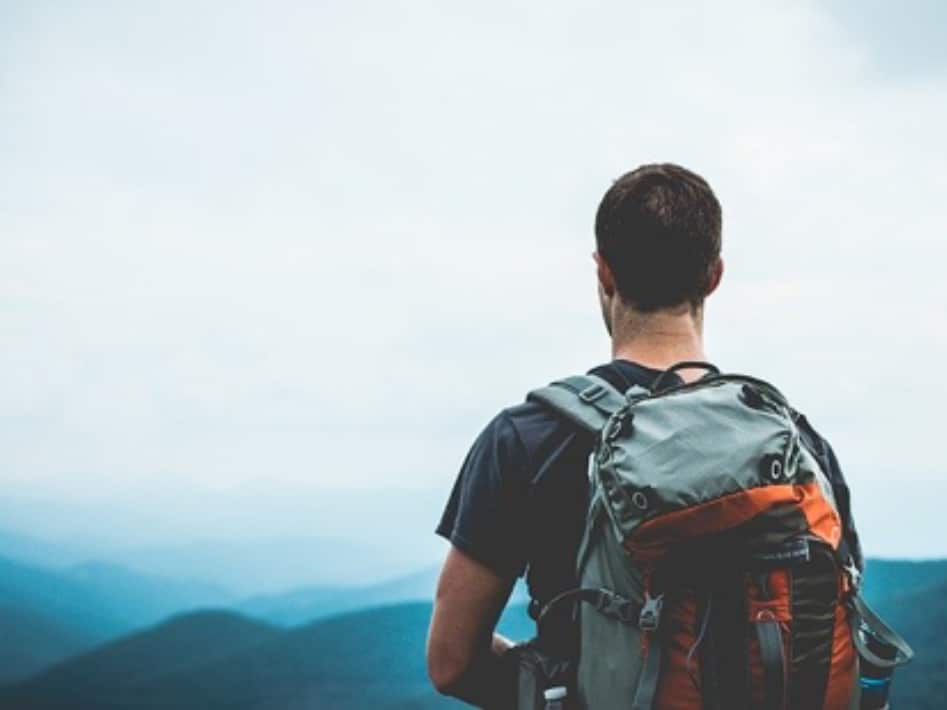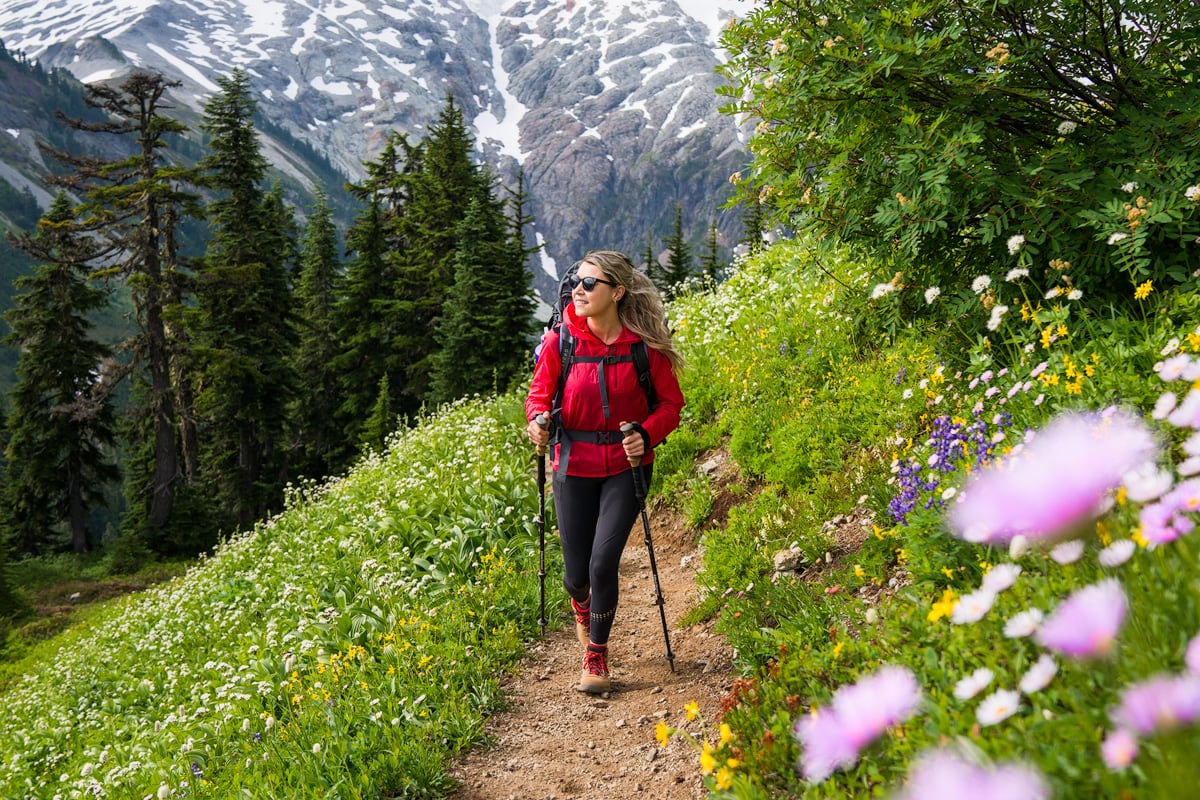Hiking, often questioned as ‘what is hiking?’, is a popular outdoor activity that involves walking in natural environments, often on trails or paths through mountains, forests, or other scenic landscapes. It allows individuals to connect with nature, explore new surroundings, and challenge themselves physically and mentally. Whether you are a seasoned hiker or someone looking to embark on your first hiking adventure, this article will provide you with all the information you need to make the most of this exhilarating outdoor pursuit.
What is Hiking?
Hiking, also known as trekking or rambling, is an activity that has been enjoyed by humans for centuries. It offers a unique and immersive experience, allowing individuals to escape from their daily routines and immerse themselves in the beauty of nature. The act of hiking typically involves walking for extended periods of time, often covering considerable distances and varying terrains.

Hiking can be done individually or in groups, catering to different preferences and goals. It can range from leisurely day hikes on well-marked trails to multi-day backpacking trips in remote wilderness areas. The key elements that define hiking include exploration, physical exertion, and a connection to the natural world.
How to Engage in Hiking
1. Start with Proper Planning
Before embarking on a hiking trip, it is crucial to engage in proper planning. This includes researching the trail or area you intend to explore, understanding its difficulty level, checking weather conditions, and obtaining any necessary permits or permissions. It is important to assess your own fitness level and choose a hike that matches your capabilities.

2. Gear Up Appropriately
Equipping yourself with the right gear is essential for a successful hiking experience. Comfortable and sturdy footwear, appropriate clothing layers, a well-fitted backpack, navigation tools such as a map and compass, sunscreen, insect repellent, a first aid kit, and sufficient water and snacks are some of the items you should consider carrying. Additionally, depending on the duration and remoteness of your hike, you may need to pack camping equipment, cooking utensils, and food supplies.

3. Follow Trail Etiquette
Respecting nature and fellow hikers is crucial while hiking. Stick to designated trails and avoid venturing off into sensitive areas to minimize environmental impact. Yield to uphill hikers, keep noise levels low to preserve the tranquility of the surroundings, and dispose of waste properly. Leave no trace behind, ensuring that the natural environment remains pristine for future visitors.
4. Stay Safe and Hydrated
Safety should always be a top priority during a hiking expedition. Make sure to inform someone about your plans and estimated return time. Carry a fully charged mobile phone or communication device, along with a backup power source, to stay connected in case of emergencies. Stay hydrated by drinking water regularly and be mindful of signs of dehydration or exhaustion. In challenging terrains, consider using trekking poles for stability and balance.
Examples of Hiking Adventures
Hiking offers limitless possibilities for exploration and adventure. Here are a few examples of breathtaking hiking destinations around the world:
- The Inca Trail, Peru: Embark on a multi-day journey to Machu Picchu, following the ancient path of the Incas through misty mountains, cloud forests, and fascinating archaeological sites.
- Yosemite National Park, USA: Discover the stunning landscapes of Yosemite while hiking the Half Dome trail, with its panoramic views of granite cliffs, waterfalls, and giant sequoias.
- Cinque Terre, Italy: Explore the picturesque coastal villages of Cinque Terre, connected by scenic hiking trails that wind through vineyards, olive groves, and colorful cliffside towns.
- Tongariro Alpine Crossing, New Zealand: Experience otherworldly landscapes as you traverse the volcanic terrain of Tongariro National Park, passing by emerald lakes, steaming vents, and rugged peaks.
- The Annapurna Circuit, Nepal: Embark on a challenging hike through the Himalayas, circling the massive Annapurna massif while witnessing breathtaking mountain vistas, diverse landscapes, and charming villages.
Comparing Hiking with Other Outdoor Activities
While hiking shares similarities with other outdoor activities, it has its own unique characteristics that set it apart:
- Hiking vs. Camping: While camping involves setting up a temporary shelter and staying overnight in nature, hiking focuses more on the physical act of walking and exploring different terrains. However, hiking and camping often complement each other, as many hiking trails offer camping spots at various intervals.
- Hiking vs. Mountaineering: While both involve traversing mountains, mountaineering typically requires specialized skills, equipment, and technical knowledge. Hiking is generally less technical and can be enjoyed by individuals with varying levels of experience.
- Hiking vs. Trail Running: Trail running is a faster-paced activity that involves running on hiking trails or off-road paths. Hikers tend to focus more on enjoying the journey, taking breaks to appreciate the scenery, and covering longer distances at a leisurely pace.
- Hiking vs. Trekking: Hiking is typically a one-day activity, often on well-marked trails or paths in natural environments. It’s akin to a leisurely walk in the wilderness, suitable for individuals of various fitness levels. On the other hand, trekking is a more intense, multi-day journey, often in more challenging terrains or remote regions. While hiking is a light stroll in nature’s embrace, trekking is a deeper dive into the wild, demanding more preparation and endurance.
Expert Advice for a Memorable Hiking Experience

- Start Slow and Gradually Increase Difficulty: If you are new to hiking, start with shorter and easier trails to build endurance and confidence. As your fitness level improves, gradually challenge yourself with more difficult hikes.
- Research Trail Conditions and Weather: Stay informed about trail conditions, closures, and weather forecasts before setting out on a hike. This will ensure you are adequately prepared and aware of any potential hazards or changes in terrain.
- Practice Leave No Trace Principles: Minimize your impact on the environment by adhering to the Leave No Trace principles. Respect wildlife, pack out all trash, and avoid damaging vegetation or disturbing natural features.
- Stay Mindful of Your Physical Limits: Listen to your body and know your physical limits. Take breaks as needed, stay hydrated, and adjust your pace according to your comfort level. Pushing yourself beyond your capabilities can lead to exhaustion or injuries.
- Join Hiking Communities and Groups: Engaging with like-minded individuals and joining hiking communities or groups can enhance your hiking experience. You can learn from experienced hikers, gain valuable insights about new trails, and have a support network for safety and encouragement.
Frequently Asked Questions (FAQs)

Q1: Is hiking suitable for all fitness levels?
Hiking can be enjoyed by individuals of varying fitness levels. However, it is important to choose trails that align with your capabilities and gradually increase difficulty as your fitness improves.
Q2: What should I wear while hiking?
Wear comfortable and moisture-wicking clothing layers appropriate for the weather conditions. Opt for sturdy and supportive footwear, such as hiking boots or trail shoes, to protect your feet.
Q3: How do I find hiking trails in my area?
There are several resources available to find hiking trails near you. Online platforms, guidebooks, local hiking clubs, and visitor centers are great sources of information.
Q4: Are there any risks associated with hiking?
While hiking is generally a safe activity, there are inherent risks involved, such as injuries, getting lost, or encountering wildlife. Proper planning, preparation, and adherence to safety guidelines can minimize these risks.
Q5: Can I go hiking alone?
Hiking alone can be an enriching experience but requires additional precautions. Inform someone about your plans, carry emergency communication devices, and choose well-traveled trails or popular areas.
Hiking offers a unique opportunity to reconnect with nature, challenge oneself, and explore breathtaking landscapes. Whether you are an experienced hiker or a beginner, understanding the essence of hiking, proper planning, appropriate gear, trail etiquette, and safety measures are key factors in ensuring a memorable experience. So lace up your boots, pack your backpack, and embark on an adventurous journey filled with stunning vistas, personal accomplishments, and a deeper appreciation for the great outdoors.


